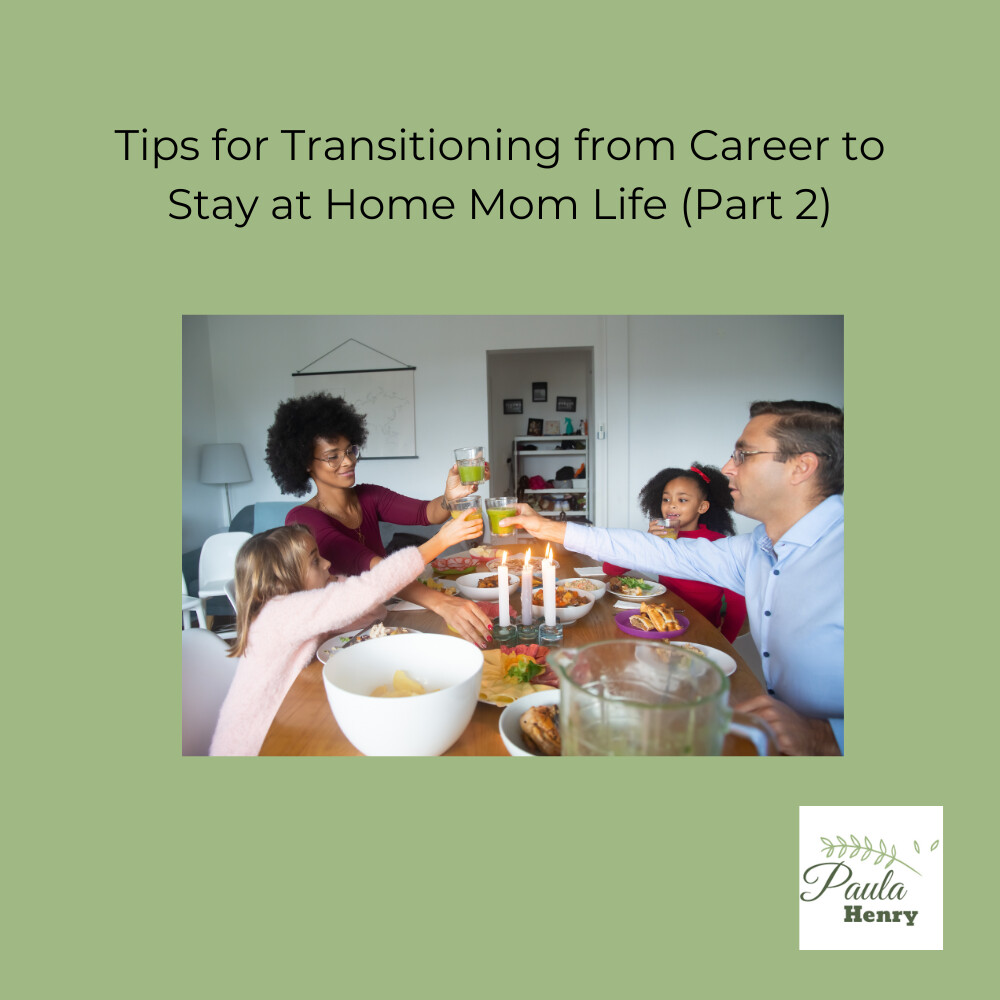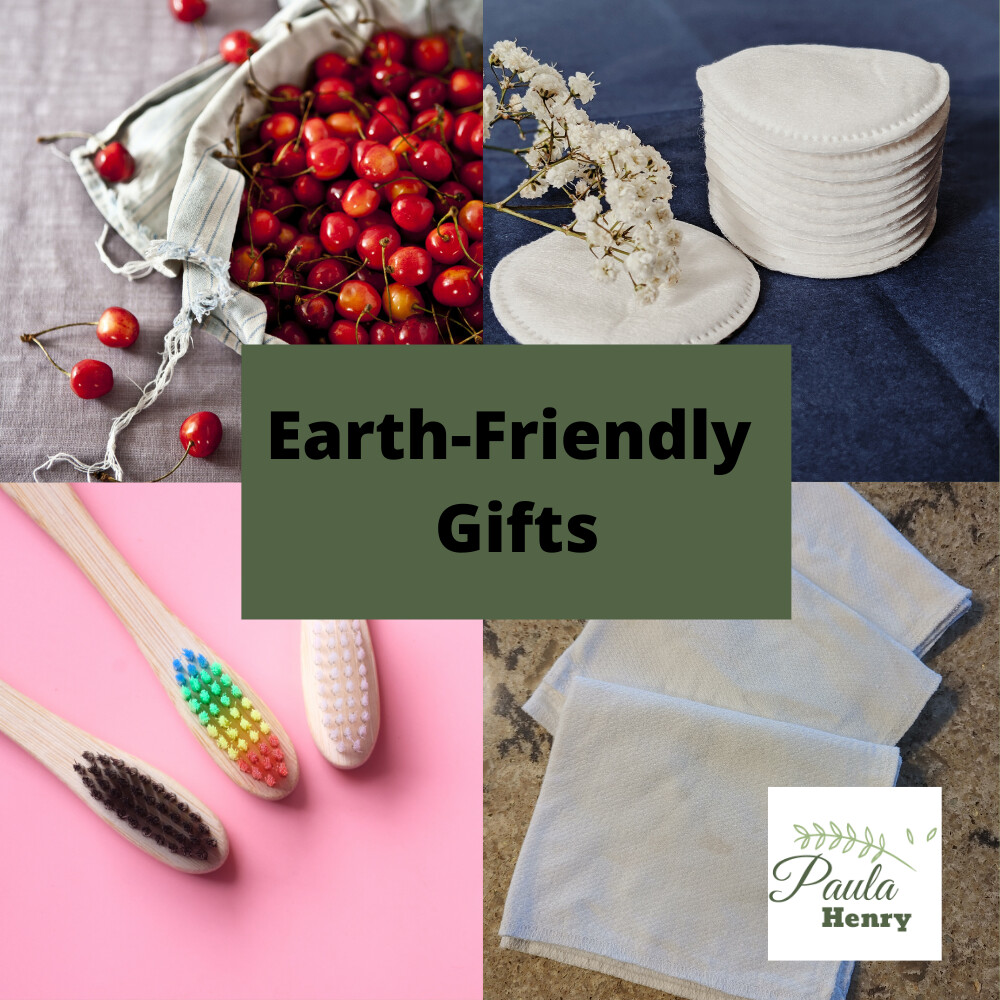
Here are a few of my favorite options:
- Reusable cotton rounds. These are great for cleaning your face. Just squirt on some of your favorite face wash or wet them and apply soap. Rinse after use and then throw in the washer and dryer. The ones I have, I have used for over a year and they are in great shape. To keep tabs on them as they go through the wash, it’s best to put them in a lingerie bag.
- Bamboo toothbrushes. Use these as stocking stuffers or gifts for Hannukah. Bamboo is a much more earth-friendly material than plastic to make toothbrushes, so introducing someone to a bamboo toothbrush is a fabulous idea.
- Reusable produce bags. This is my all-time favorite gift. Grab a set of 5-10 bags and that will set someone up for shopping success. Choose a set made from cotton to be the most earth-friendly option. They can be thrown in the wash and when they’ve reached the end of their usefulness, they can be composted.
- Beeswax food wraps. Although you can make your own, finding someone who makes these locally alleviates the work and supports a small business. If you can’t find someone locally who makes them locally, look for a seller on Etsy.
- Zippered silicone bags. These help to replace the single use version that often go straight into the garbage after being used once. I have several versions of these and they are all fantastic. Different sizes help to accommodate different foods and these are perfect for adding to school or work lunches.
- Reusable cloth napkins. The ones that I use are from a seller on Etsy. They are made of two-ply diaper material and are super absorbent. We’ve been using the set I have for at least 5 years and they look practically brand new. These go straight through the washer and dryer and require no ironing.
I Already Use a Reusable Water Bottle, What Else Can I Do to Reduce Single Use Plastic for Beverages
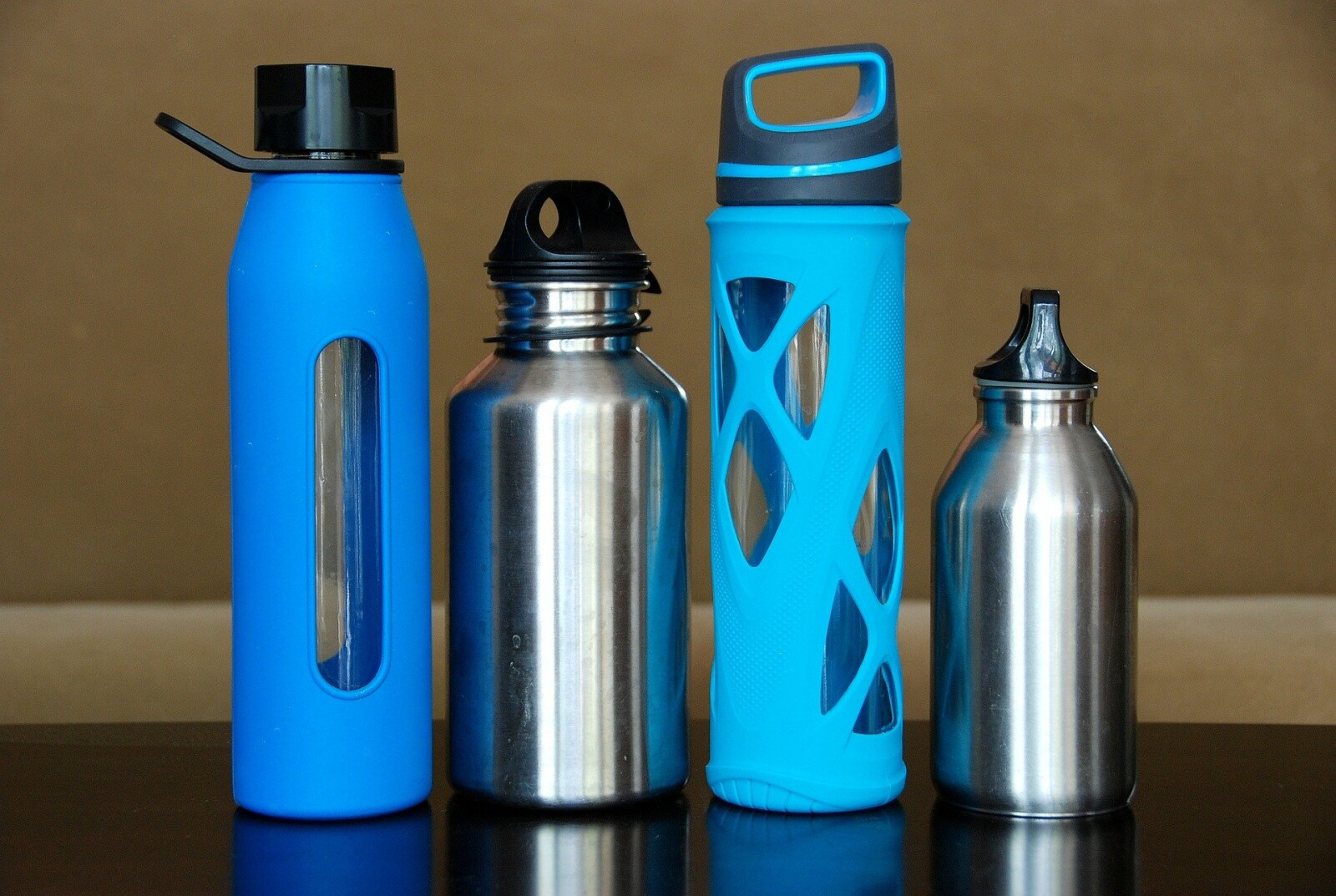

Most of us are aware of plastic waste. We see it all over the place from the discarded plastic water bottle to the plastic shopping bag stuck in a tree. And, many of us are probably aware that the plastic breaks apart over time even if it doesn’t decompose. What we might not be aware of is what happens to the parts of plastic that we can’t easily see.
Microplastics are small pieces of plastic (less than 5 mm in size). They come from a variety of sources. Many microplastics come from the breakdown of plastics over time into smaller and smaller pieces, some so small that we can barely see them. Some microplastics are even manufactured intentionally and appear as small beads in cosmetics and personal care products. They are added to replace natural ingredients and serve as an abrasive material to help exfoliate the skin or clean teeth. I remember hearing about microbeads in personal care products like facial cleansers but I never realized that the microbeads were made from plastic. I’m not sure what I thought they were made from. I just never thought about it. Thankfully, in 2015, the US banned the use of microbeads in personal care products, but it’s unknown what other countries are allowing their use.
Microplastics are also shed from clothes made from synthetic fibers. This is an area that I was not aware of until recently. Again, I just didn’t think about it but every time we wash our clothes, small fibers and bits are shed and washed down the drain with the wash water. Those small bits then travel on to our water treatment facilities and into our water systems.
So, what’s the problem with microplastics?
Microplastics can be inhaled or ingested by all living creatures. Their prevalence is causing problems with all walks of life and their long term effects on health are unknown. The mass production of plastics began in the 1940s and has increased at a phenomenally fast rate. According to Statistica, the production of plastics increased from 200 million metric tons in 2002 to 368 million metric tons in 2019. In 1950, production was just 1 million metric tons [1]. Eight million metric tons are dumped into our ocean annually and of that, 236,000 tons are microplastics [2, 3].
Microplastics, like much of our waste, ultimately ends up in our waterways. It gets washed down our rivers and streams to ultimately end up in the ocean. Sea life consumes the plastics, either mistaking them for real food or inadvertently along with their food. The plastics then cause numerous health issues. Small animals consume plastics which are then transferred to the larger animals (including humans) who consume the smaller ones, and the cycle continues on and on. As a fan of sea turtles, I have known about the dangers of plastic shopping bags being mistaken for jellyfish. The image of a plastic ring from a 6 pack of cans stuck on the neck of a turtle is ingrained in my head. I was not aware until recently that this happened more regularly with smaller pieces of plastic. It just never occurred to me.
The harm caused by microplastics has not been studied extensively and the study of the harmful effects of microplastics is a relatively new field, but the fact that large marine animals like whales have been found with stomachs full of plastic is concerning. It’s becoming common to find large amounts of plastic in whales that die and end up washed on shores. One article stated that over 80 pounds of plastic was found in the stomach of a whale in the Philippines [4]. Certainly, if an animal is ingesting plastic instead of nutritious food, they will ultimately not be able to survive.
The effect on marine life is bad enough but what about the effects on humans? A study conducted in 2019 analyzing a series of other studies estimated that humans ingest between 39,000 - 52,000 microplastic particles per year depending on age and sex. In addition, those who consume bottled water on a regular basis ingest an additional 90,000 particles as compared to 4000 particles for those who consume tap water [5]. If you need another reason to stop drinking bottled water, look no further than that last sentence.
Just last month, a study was published demonstrating that microplastics are present in human placentas [6]. That means that microplastics ingested by the mother during pregnancy are potentially being passed on to the child in the womb. What these plastics will do to our health long term is yet to be seen, but it certainly is concerning.
We need to reduce our consumption of all plastics but single use plastics at a minimum. Here are some ways in which we can do that:
1. Use reusable shopping bags for grocery shopping (including produce bags) and other shopping trips. Whether you reuse the ones that you already have at your house or you make or purchase ones that will last a long time, reducing your consumption of new plastic bags is a good habit to get into.
2. Drink tap water instead of bottled water. If the water you have access to is not suitable for drinking, consider purchasing a water filtration system. Carrying around a reusable water bottle can significantly reduce the amount of plastic you consume which reduces the plastic in our environment.
3. Purchase clothing made of natural materials such as cotton, wool, silk, hemp and bamboo. Fabric made from synthetic materials like polyester, fleece and nylon sheds small threads and bits that enter our water stream, mostly from being washed. If you have clothes made of synthetic materials, washing them in a bag that catches the fibers is one way to reduce their spread.
4. When shopping for food, if you have the option to purchase a food in a non-plastic container, do it. Not all foods have this option, but when it is there, opt for the non-plastic version. If you have access to bulk food stores, use them for those items.
All of these changes are small but can be impactful if many people do them.
Sources:
1. https://www.statista.com/statistics/282732/global-production-of-plastics-since-1950/
2. Jambeck, J. R., et al. “Plastic Waste Inputs from Land into the Ocean.” Science, vol. 347, no. 6223, 13 Feb. 2015, pp. 768–771., doi:10.1126/science.1260352.
5. Cox, Kieran D.; Covernton, Garth A.; Davies, Hailey L.; Dower, John F.; Juanes, Francis; Dudas, Sarah E. (2019). "Human Consumption of Microplastics" (PDF). Environmental Science & Technology. 53 (12): 7068–7074. Bibcode:2019EnST...53.7068C. doi:10.1021/acs.est.9b01517. PMID 31184127.
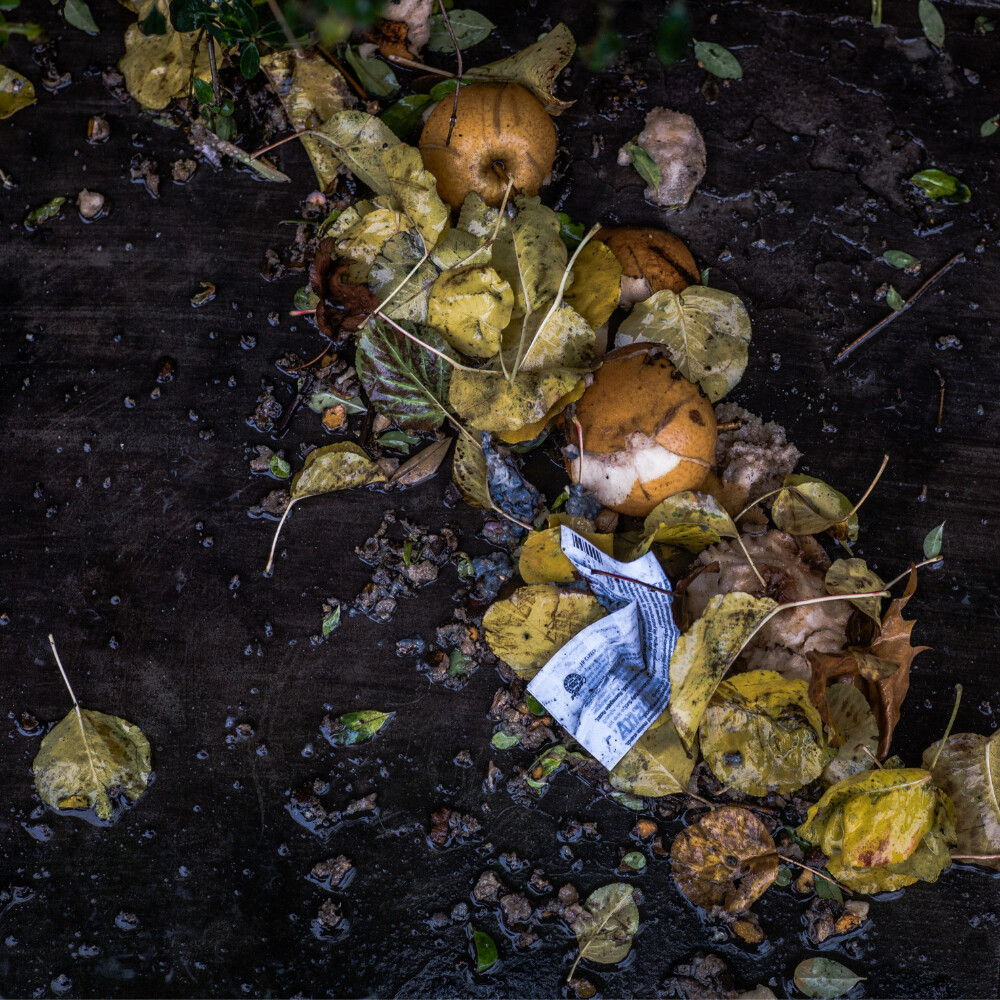
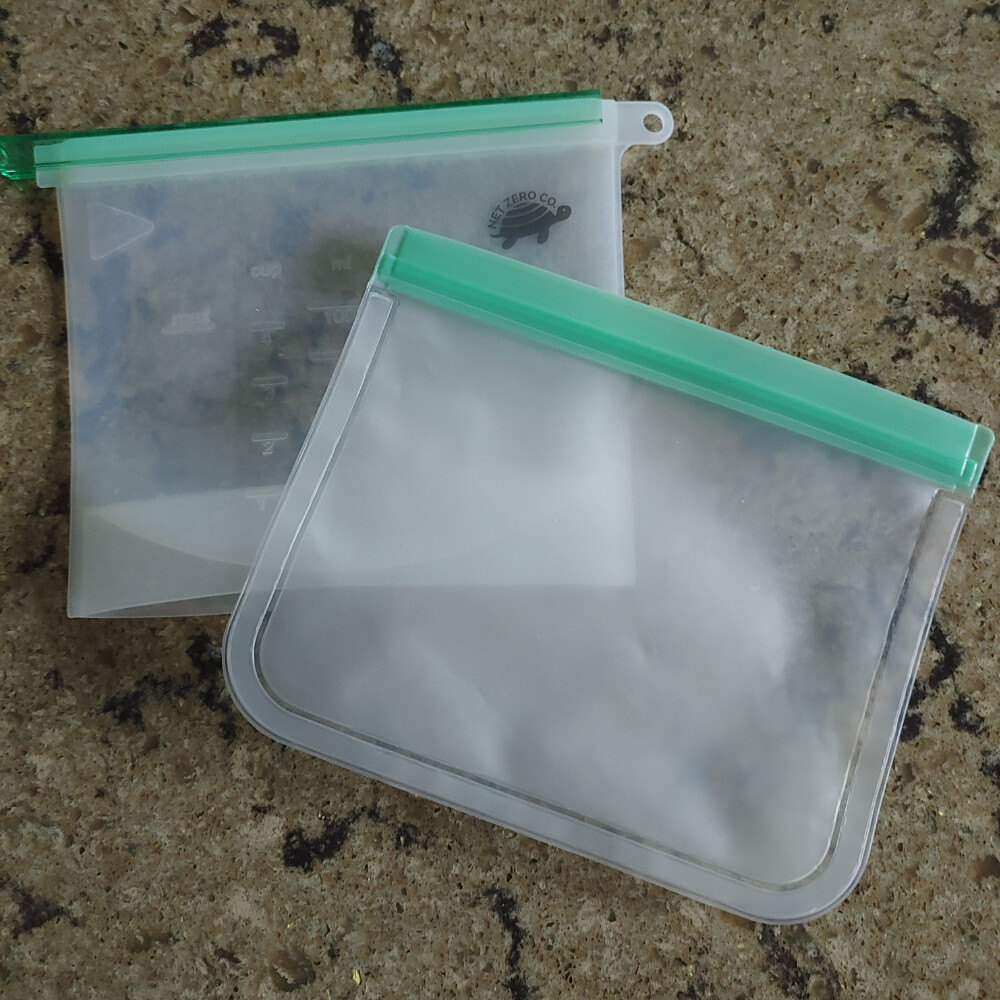

Growing up, when we needed to store leftovers in the fridge, we would throw on some plastic wrap or aluminum foil. Although I ditched the regular use of plastic wrap a long time ago because I knew it couldn’t be recycled, so not sustainable, I only recently stopped using aluminum foil. Why, you ask? I’ve been a believer in recycling and up until recently, aluminum foil was accepted in our recycling bin for curbside pickup. Whether or not it actually got recycled is a discussion for another day, but now that we’re not allowed to put it in, I was without an option.
So, on went the search for a more earth-friendly substitute. Now, don’t get me wrong, most of my leftover containers are glass and have their own lids, so it’s not very often that I use something else, but when I need something, I need it to work.
I first discovered beeswax wraps from a friend of mine who sent them to me as a gift. The pattern of the fabric was the ocean with turtles, so it suited me well. I used them a handful of times before they were lost. One got eaten by the dog (don’t worry, she’s fine) and the other two were washed with really hot water, so they lost their beeswax. Note to readers – be careful how hot you set the water or learn how to recoat the wraps because beeswax has a low melting point. And, by the way, for those not wanting to use animal products, there are some on the market that are certified vegan. For me, beeswax is fine, so these work for me. The ones I use can be found here: http://bit.ly/waxcoatedwraps
Check out my YouTube video here.
I liked using the wraps, but there were a couple of things I didn’t like. First, I don’t like that the wraps are square or rectangular in shape. I would rather wraps that are circular in shape as they would fit bowls better, which is what I typically use to store leftovers. As a quilter, I imagine the decision on shape is out of convenience as it’s much easier to cut squares and rectangles instead of circles. Using a square wrap on a round object results in extra fabric being folded up under the bowl. I know, small inconvenience, but I’m looking for a solution that works and that I like. The second thing I didn’t like is that the largest one was not large enough. One of the pans that I use rather frequently is for casseroles and it’s your typical 9”x13” pan. The beeswax wraps are not long enough to cover the edges of the pan.
Moving away from the beeswax wraps, I discovered stretch reusable lids that are made from silicone. Silicone comes from sand, so I find it appealing from a sustainability standpoint. The lids come in a set of different sizes to fit different sized dishes. They are transparent so that you can see inside the dish and circular in shape so they fit the bowls I’m looking to cover. They appear to be thick enough that I’m not concerned about tearing them. As an added bonus, they make a great noise (think drum) when you tap on them, so my teenage children are entertained. The ones I use can be found here: http://bit.ly/Siliconestretchlids The lids are hand wash and air dry. I’ve used mine for about 3 or 4 months so far and they are holding up quite well. The only negative I have to mention is that I need some that are larger in diameter. I wanted something to cover the pies I made for the holidays and none of the lids fit the pie plates.
I’d love to hear what your experiences are on using either the beeswax wraps or the silicone lids. Which one is your preference?
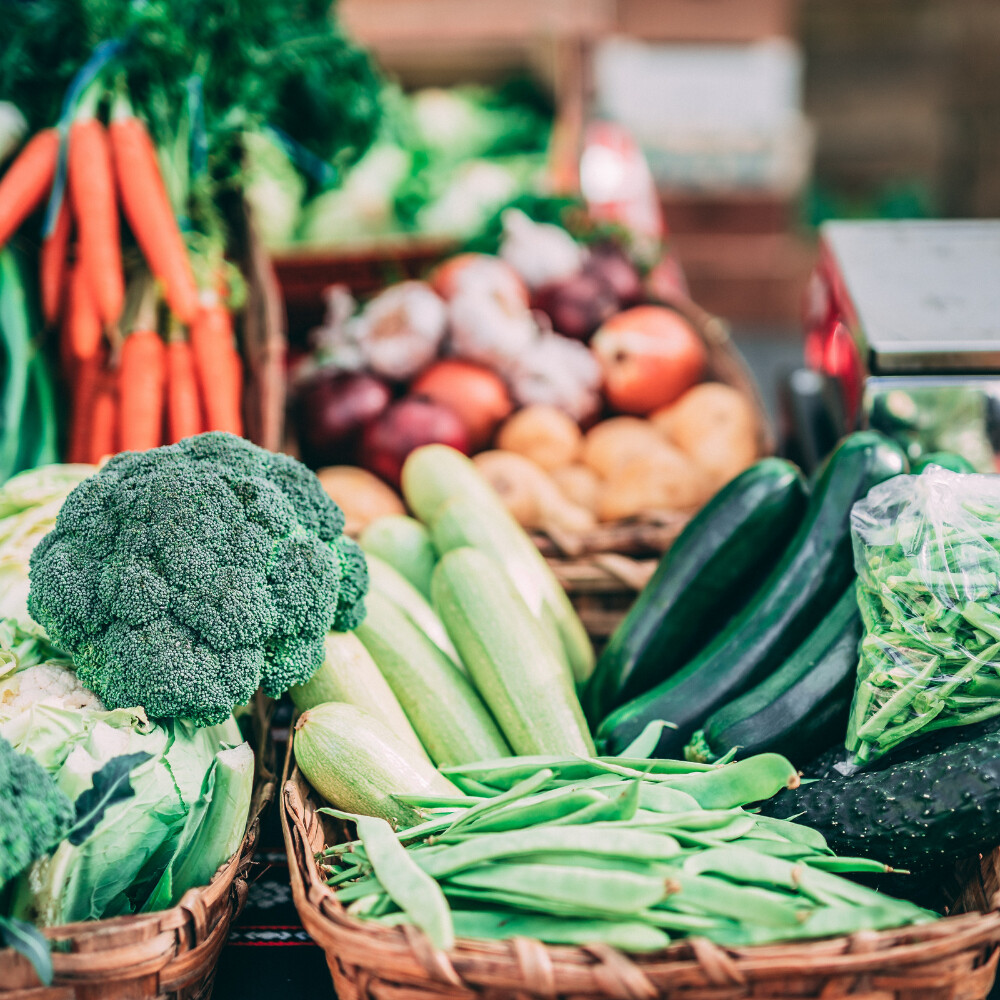
A great way to improve your earth-friendly lifestyle is by making a plan to reduce food waste within your home. Food waste is a huge problem around the world and in the US especially. It is estimated that, in the US, up to 50% of all produce is thrown away. The food that is thrown away ends up in the landfill, produces methane, and contributes to climate change. So, food waste is not only bad for us as Americans, it’s bad for the environment. The cost of this waste is estimated to be about $1500 per year for a family of 4.
Here are 3 simple ways to reduce food waste in your home.
1. Make a meal plan. Before you head to the grocery store, plan out your lunches and evening meals for a week and list out the ingredients that you will need for each meal. This will allow you to make fewer trips to the grocery store (save gas and energy) and save money not buying things you will not use. Fresh fruits and vegetables typically stay fresh for about a week, so planning out what you plan to cook in a week assures you will use up the fresh produce before it goes bad.
2. Buy only what you need for the plan. With your meal plan in hand, only purchase what you need for the meals for this week. But, be flexible. You can change your meal plan on the fly if there’s something on sale or it suddenly sounds better to you (boy, those fresh pineapples look great!), but replace a meal with the new idea rather than buying for an additional meal.
3. Freeze the surplus. If you end up purchasing more than you will use, freeze the extra before it goes bad. This is the case in our house during the summer when we’re members of a Community Supported Agriculture (CSA) farm. If I receive extras, I go ahead and freeze them ahead of time. This is true for the times when I see green beans on sale as well. If they’re in a bag, I just toss the whole thing in the freezer to eat later. The second most common item I end up freezing is bananas. For me, there’s a very short period between the perfect banana and the overripe one. Overripe bananas go into banana bread or the freezer if I don’t have time to bake at the moment. Make sure to remove the peels before you freeze them so that you can add them directly to your recipe. Strawberries, blueberries, peaches and other fruits can easily be frozen for use in smoothies, breads, etc.
Following these 3 simple, earth-friendly steps will not only reduce food waste which is good for the planet but will save you money in the long run and get you on a positive start for the year to come. Oh, and if you’re looking to step up your game to throw away less food, consider composting what you can’t use.







